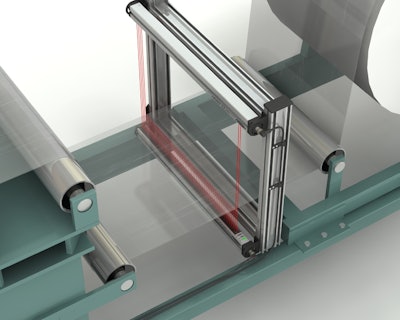
Automation World regular contributor Keith Campbell said in a blog post recently, “Most Consumer Packaged Goods companies don’t think of themselves as manufacturers In the executive suite, they think of themselves as clever marketing companies with valuable brand equities.” But those CPG employees on the plant floor and in the engineering departments know that their companies are major manufacturers, part of the broader hybrid manufacturing segment (distinct from discrete/metalworking manufacturers and process/refining manufacturers) that accounts for one-third of the 5 trillion dollars of annual U.S. manufacturing output. They (you) also know that automation technology can significantly enhance both sides of your hybrid process—whether it’s operator interfaces on the batch processing side or energy-efficient motors on automated packaging machines.
Soon after reading Campbell’s comment, I got some information from Mark Lampert, business development manager for sensor manufacturer Banner Engineering. He talked to me about how trends in CPG product marketing and quality control are driving makers of packaging machines to incorporate improved sensing and communication technology. Those machine builders are meeting the needs of their CPG manufacturing customers for smarter, more flexible packaging machines.
“Retailers are requiring suppliers of consumer packaged goods to provide customized product sizes, from single servings to multipacks to display-ready and sustainably packaged goods,” says Lampert. “To meet these demands, CPG manufacturers can no longer apply a one-size-fits-all approach to case sizes and enclosures. As a result, they are experiencing a higher mix of product variation on single production lines.”
Historically, there were fewer product sizes and manufacturing plants were able to dedicate production lines by container size. Typically, manufacturing facilities would have one production line for large containers, another for medium and yet another for small containers. To increase production efficiency and to save manufacturing space, production lines now are required to run multiple sizes, which in turn, requires more flexible packaging machines.
“To handle frequent changeovers, machine builders strive to simplify and reduce changeover times. The current trend is to move from tool-less changeovers to automated changeovers. Sensors, small servo motors and encoders on packaging machines automatically switch product sizes in seconds, instead of minutes,” says Lampert. “Operators no longer have to adjust multiple brackets and ensure each bracket was set properly. With a simple barcode scan, electric motors will adjust conveyor widths, seal bar heights and product depth. Analog sensors and encoders are used to confirm the machine is properly aligned.”
Serpa Packaging, a U.S. manufacturer of end-of-line packaging machines, offers an automatic changeover option on every machine. To view an example of this, watch Serpa Packaging's video online.
Flexible packaging machines—equipped with barcode scanners, sensors and wireless communication—have also evolved to incorporate other automation, says Lampert. “By simply scanning a barcode, machines are able to identify new product runs. Using the packaging machine’s internal communication, thresholds and settings are automatically set and sensors verify the machine is properly positioned to adapt to changing packaging lines. Additional sensors verify the correct product and containers are used,” he says.
Pearson Packaging Systems, an OEM in Spokane, WA, manufactures and sells the CS30, a case sealer that adapts to random box sizes. As packages travel along a conveyor, sensors are used to measure height, length and width. The dimensions are communicated to robotic flap folding and sealing arms, which move in accordance with the packages dimensions. The machine is able to seal up to 30 random packages per minute.
These types of packaging machines can be found in web-based fulfillment centers and large CPG manufacturing facilities where they want to combine multiple production lines to help save time and money. Typical flexible packaging machine sensors include laser sensors, arrays and encoders. “Laser sensors and arrays are both able to operate at high speeds and offer high resolution for precise measurements, while the simplicity of an encoder makes it a cost-effective solution to measure length. Not only are these sensors useful for completing automatic changeovers on the fly, they can also be used to make machine adjustments between lot sizes,” says Lampert.
While Lampert admits that flexible, automated packaging machines can come with a large price tag, “manufacturers are able to achieve a high return on investment through reduced downtime during changeovers and the ability to produce additional product lines without purchasing additional assets or floor space. In addition, automated packaging machines can easily and quickly detect and reject product anomalies—saving end users time and protecting their reputation for quality in the market,” he says.
As David Greenfield says in his blog post, one factor boosting U.S. manufacturing is the use of advanced technology and processing. Citing a Kiplinger report, he says, although manufacturing that requires little processing has fled the U.S. for lower-wage sites overseas, industries requiring more sophisticated processing are more likely to stay put. These industries include aviation, auto making, biotechnology and industrial machinery.” Flexible packaging machines are certainly in the latter category.
For more on how non-rigid packaging handling, quality control and trace-and-trace applications are being improved by advances in sensor technology, see part two of this article.

























